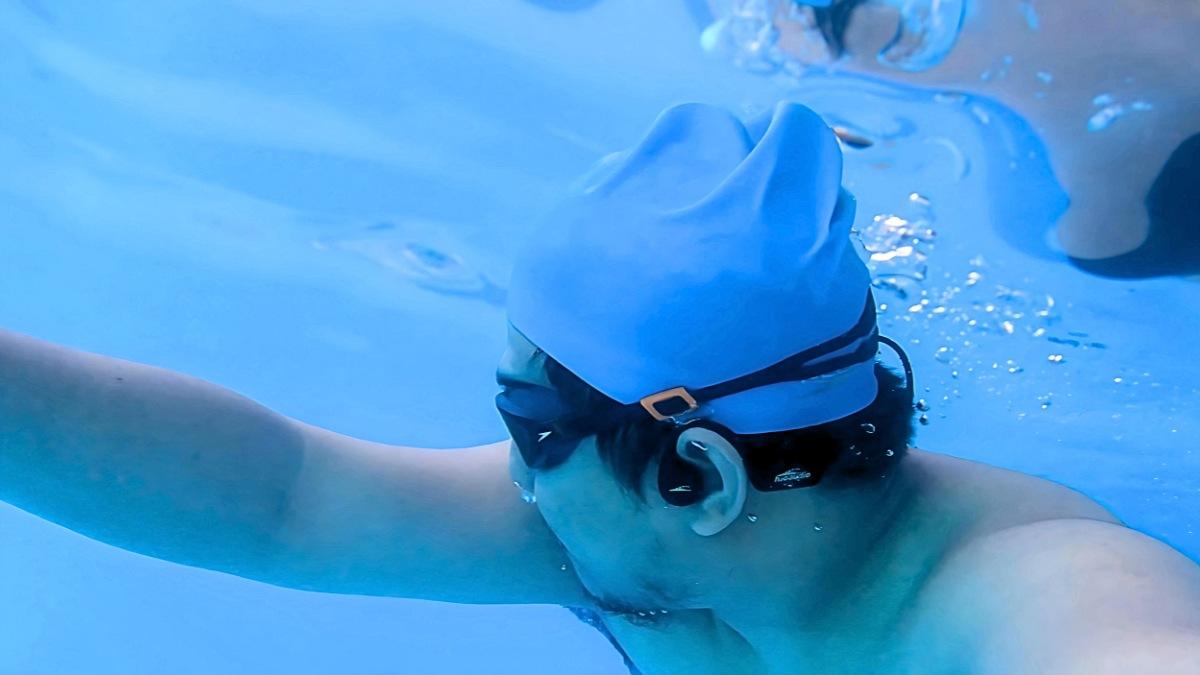The TRI PRO try to bridge two worlds but struggle to find their footing on land.
- Multiple playback options
- Secure underwater fit
- Balanced audio quality underwater
- Feels sturdy even with the plastic build quality
- Has a convenient app
- Buttons are quite hard to press
- Fit is quite wobbly aboveground
- Sound quality is bad aboveground
- Vibration can get irritating when used aboveground
H2O Audio has always been all about bringing good music to water sports lovers. They started in San Diego in 2003, long before ‘waterproof’ became a staple feature in personal audio.
As a swimmer I’ve always wanted to mix my tunes with my laps, but I’m not always keen on spending for a pair that I can ONLY use underwater. So, the TRI PRO Swimming Headphones from H2O Audio seem like they could be the answer.
Unlike others, they’re made to deliver solid sound not just in the water but also when I’m on land doing other sports. That’s why, I’m really excited to see if the TRI PRO can live up to their promise to see if these can be my go-to for on-land and underwater listening.
Read if they truly stand up to the test and keep up with my water-based workouts in this review!
Waterproof
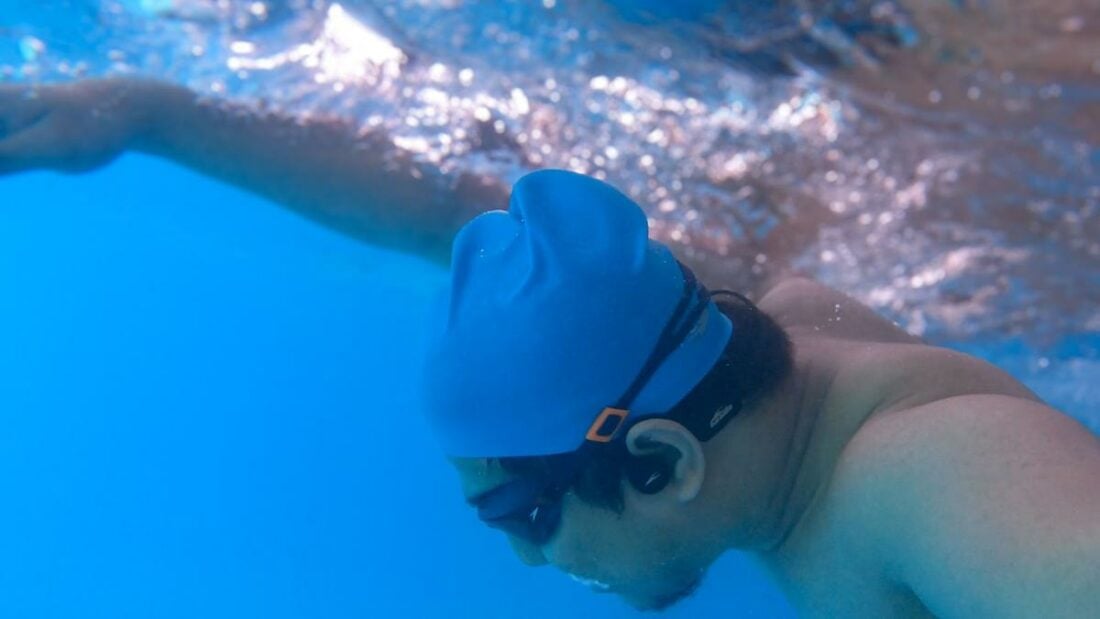
The H2O Audio TRI PRO Headphones boast an IPX8 rating. This rating means they can handle being underwater quite well, up to 12 feet (3.6 meters). But, it’s best not to go deeper than that as they are not invincible against extreme underwater pressures.
During my swimming sessions, the waterproofing of the TRI PRO headphones proved to be highly effective. There was no water seepage at any point, which speaks volumes about their reliability and the quality of their construction. They also remained snug and secure throughout the activities, so I didn’t have any distractions.
Remarkably, their performance remained uncompromised throughout the test. I observed no changes in performance and functionality at various depths and durations.
This consistency is crucial for athletes and swimmers who rely on their gear to perform under varying conditions without faltering.
Sound Quality
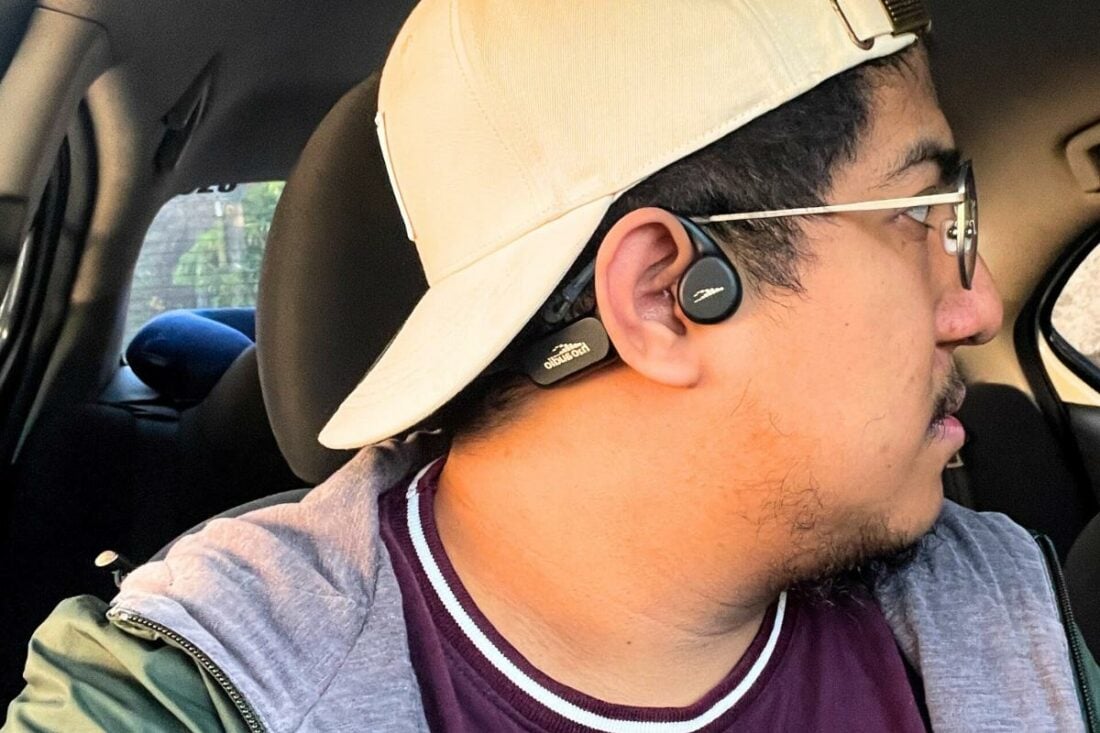
During my tests, I found that the H2O Audio TRI PRO headphones’ performance really depends on whether you’re in the water or on land.
One notable limitation is the lack of multiple listening modes, which competitors like Shokz OpenSwim have. With OpenSwim, I have the option to switch between General (for above-ground listening) and Swimming (for underwater) modes to keep up with the effects these different scenarios make on the sound.
These TRI PRO headphones, unfortunately, only have one mode. This means whether you’re swimming or just hanging out on the shore, they sound the same, which isn’t always ideal.
When I used them above water, I noticed they didn’t have much bass, and the quality of the midrange and treble sounds was just okay. If there was a lot of background noise, it was hard to hear anything through the headphones, even at full volume.
Underwater, however, it was a different story. There was no muffling or distortion, and the sound was much clearer. The headphones did a better job balancing different sounds when submerged, making for a better listening experience during swims.
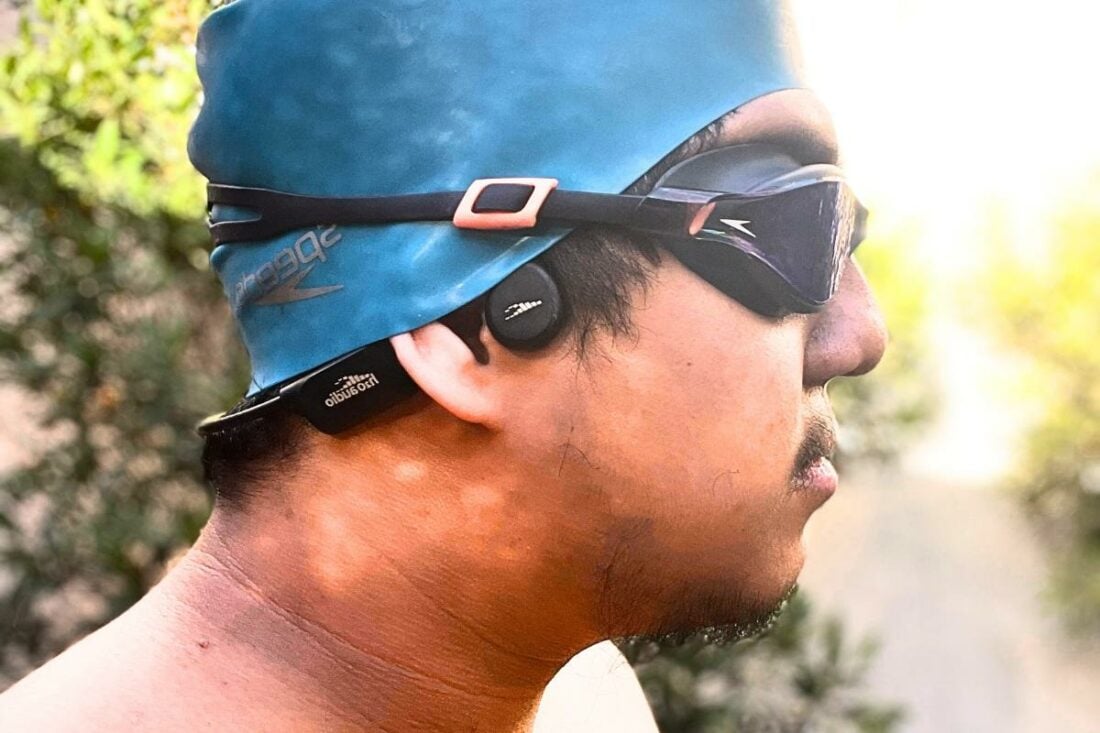
It seems like they were specifically designed for use in the water, which is great for swimming but not as versatile for other activities. That contrasts their main selling point, which is a “multi-sport” headphones.
Comfort
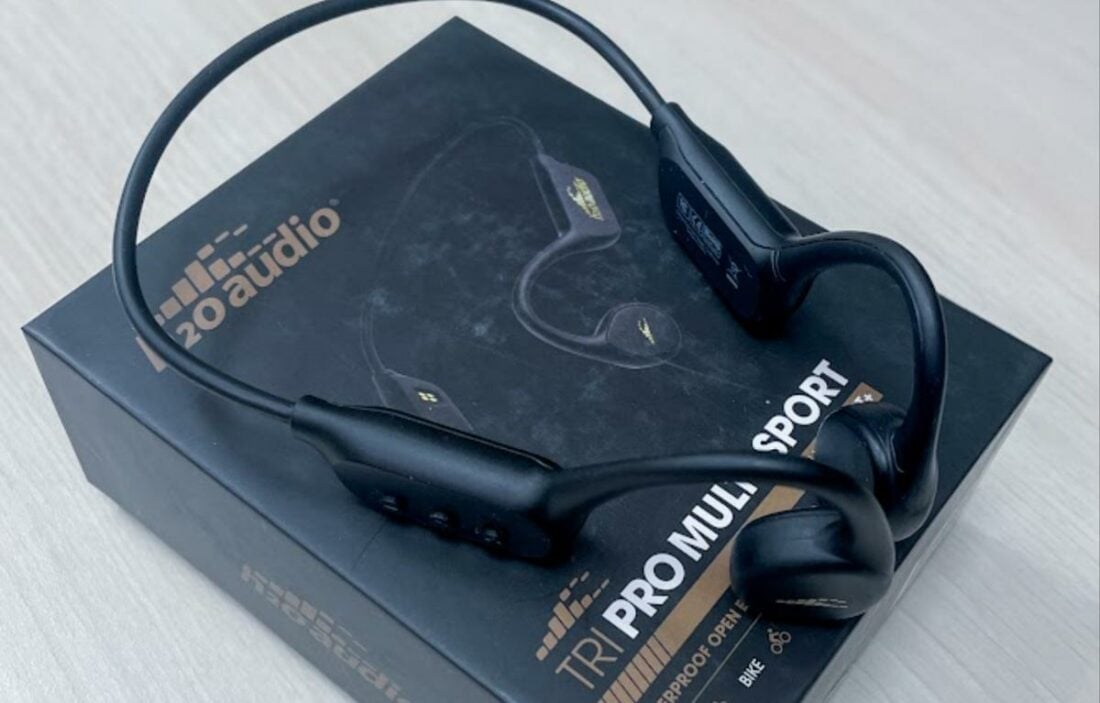
The TRI PRO headphones are actually extremely comfortable.
Their behind-the-neck design and light plastic material meant I barely felt them, even after wearing them for more than two hours. This makes them great for anyone who wants to listen to music or podcasts while swimming without constantly adjusting their headphones.
However, there was a downside.
The bone conduction speakers, which let you hear audio without blocking your ears, caused a bit of an issue when I wasn’t in the water. The vibrations from these speakers were quite more noticeable than other bone conduction headphones I tested. This is especially evident with songs that have a lot of bass and mid-range sounds.
Sometimes, this vibration was just a minor annoyance, but there were times when it made me not want to use the headphones at all.
Sure, the bone conduction technology is great for keeping your ears open. But, it’s for everyone, especially if you’re not used to the feeling it creates.
Fit
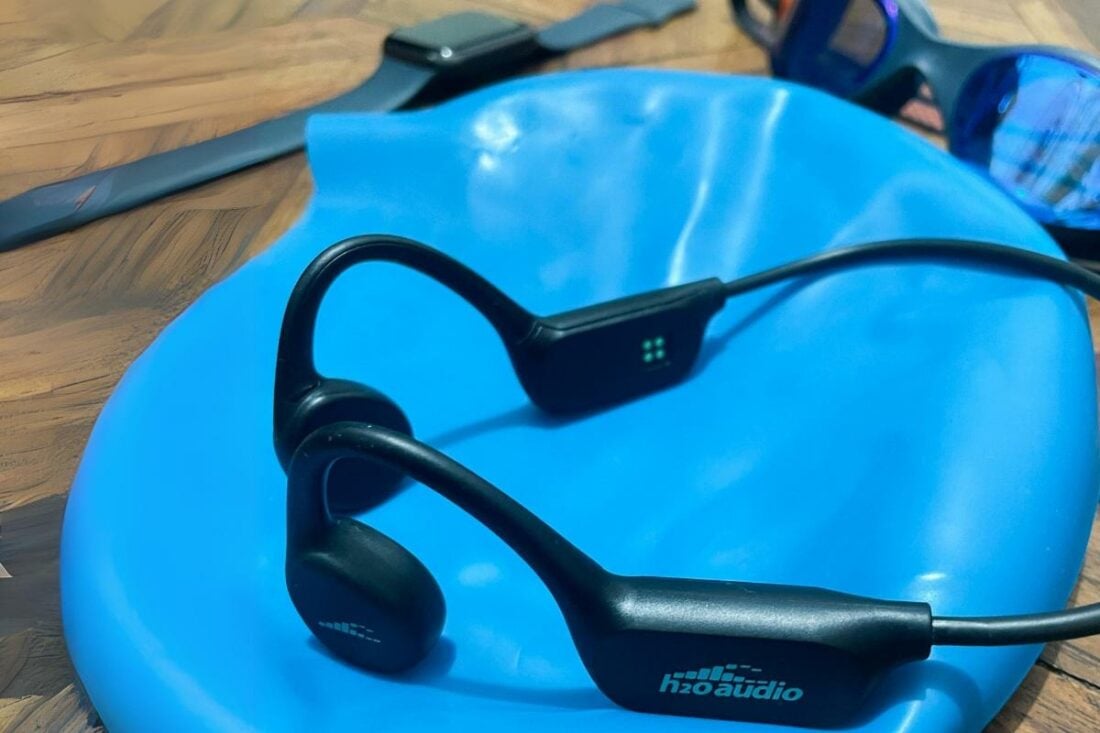
The TRI PRO Headphones from H2O Audio fit seamlessly with all my swim gear, including caps and goggles.
Their wrap-around design was key to keeping them in place, even when I switched between different swimming strokes.
I was initially doubtful about how well they would stay put underwater, considering they felt a bit wobbly on land. But, to my surprise, they stayed secure no matter how much I moved.
Despite not having any special features designed just for swimmers, their design ensures they don’t interfere with swim gear or restrict movement in the water.
This ability to work well with essential swim accessories, without needing any adjustments with how I wear other swimming gears, really makes these headphones stand out. They offer swimmers a reliable way to enjoy music without worrying about the fit.
Durability
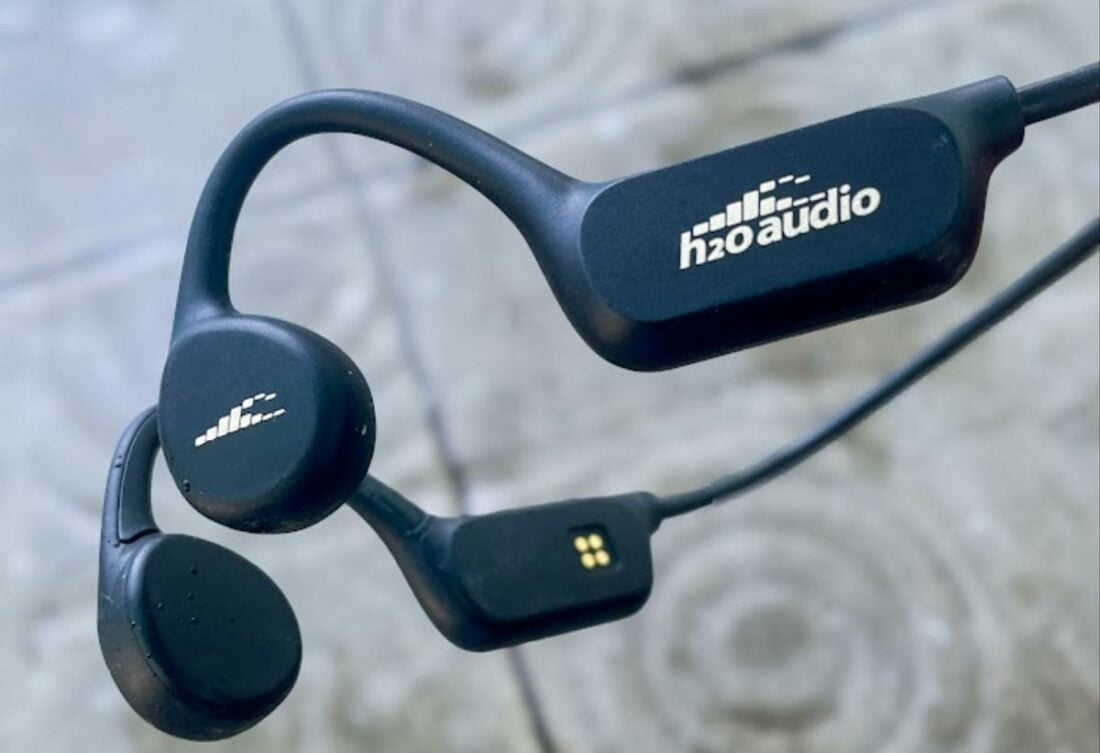
These headphones are mostly made with sturdy plastic material. This means they don’t feel as high-end as some might hope, but they do offer a good level of sturdiness.
The headphones feel durable in hand, though I wouldn’t classify them as high-quality compared to more premium materials. I’m scared that their plastic build might not hold up well against frequent drops.
However, I haven’t noticed any deterioration like color fading, cracking, or peeling, yet, after three weeks of testing them.
Also, maintenance is a breeze with these headphones. They’re designed for easy use, especially for swimmers, requiring nothing more than a quick wipe down after use and an occasional rinse to get rid of any chlorine. This low-maintenance aspect is a big plus, particularly for active users who don’t want to fuss over their gear.
Battery
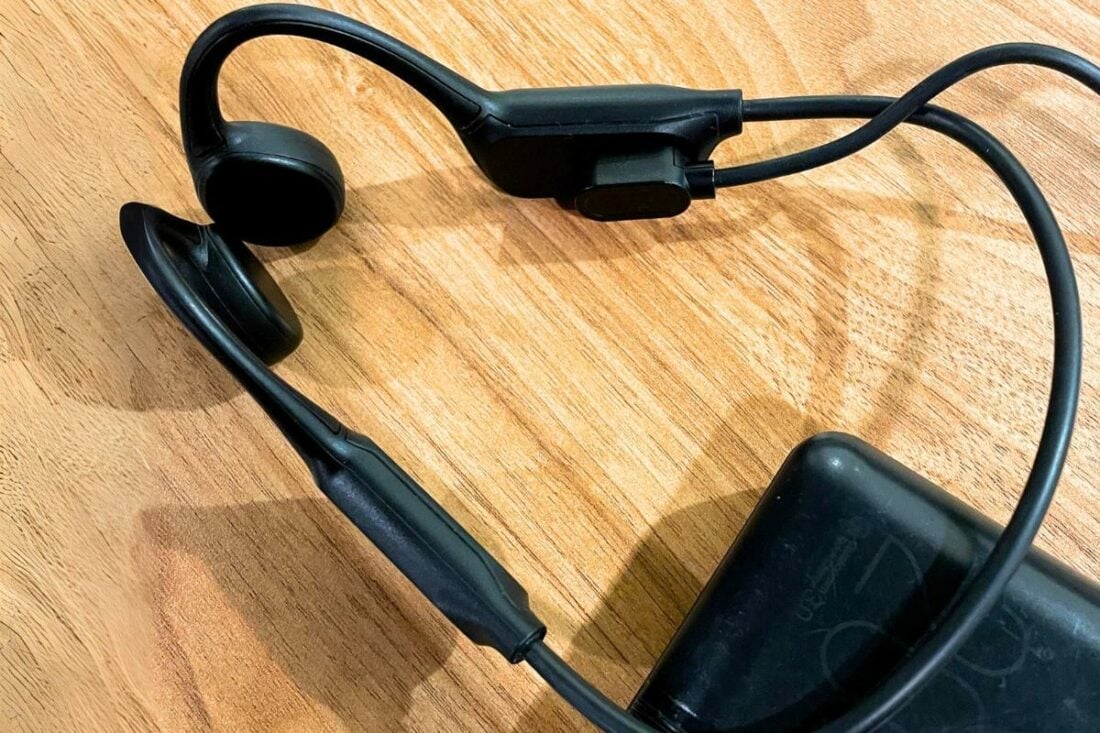
The TRI PRO Headphones lived up to H2O Audio’s promise of 4-6 hours of battery life on a full charge. In fact, they usually lasted around 5-6 hours on a single charge during my tests.
Charging these headphones was straightforward and quick, taking just 1-2 hours to reach full battery, especially when using a fast charger. This fits well into my routine, ensuring they were always ready for my next swim.
When comparing their battery life to other headphones on the market, the TRI PROs hold their own. But, there are models, like the Shokz OpenSwim, that offer up to 8 hours of playtime, so it can definitely be better.
A downside is the absence of battery-saving features and the way the headphones alert you to low battery.
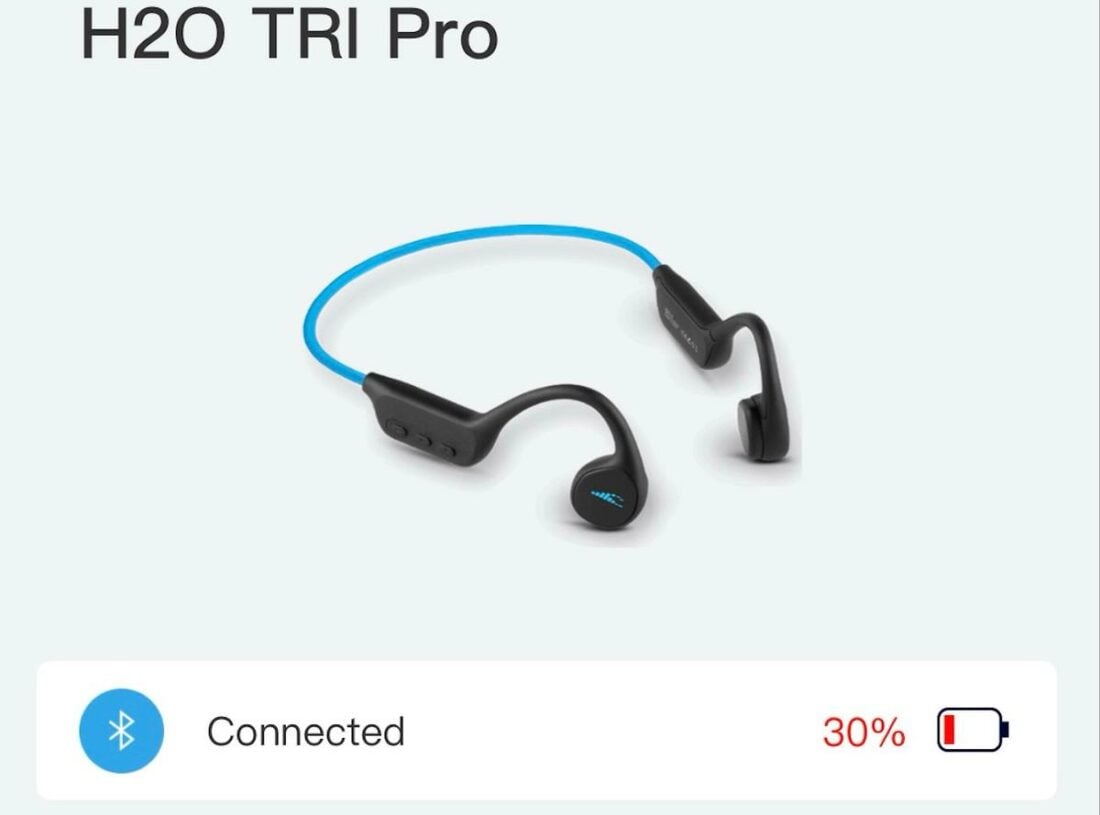
You only get a warning when the battery is nearly out, and the headphones will turn off shortly after. Checking the battery level mid-swim isn’t feasible since it requires using an app on your phone, which isn’t exactly convenient (I wouldn’t want my phone to get wet!)
UX
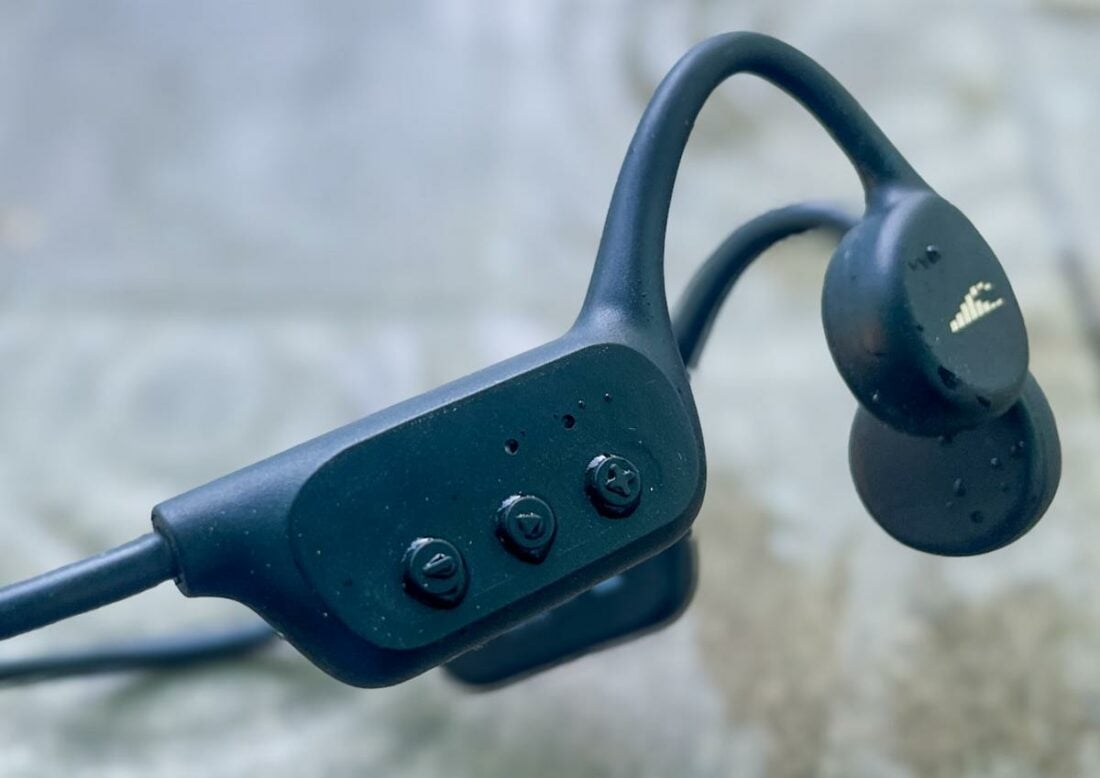
There isn’t anything special when it comes to the controls and user experience.
The headphones use a mechanical button system for controls like adjusting volume, skipping songs, or pausing your music.
These buttons are generally reliable. But, they’re not the easiest to use. I found that trying to press them while swimming could briefly interrupt my flow because they require a good bit of pressure. This might get better with time as the headphones get broken in, or so I’m hoping.
A good thing is that, at least, I haven’t had any issues with the buttons being pressed accidentally or having trouble finding them during a swim. Also, the controls haven’t shown any signs of wear or problems so far, which is great for their durability.
Built-in MP3
Since Bluetooth doesn’t work underwater, the TRI PRO Headphones’ built-in MP3 player is a welcome feature.
With 8 GB of storage, you’re looking at being able to store around 1600 songs, so you hardly ever need to worry about running out of music to listen to. The MP3 player can handle different types of audio files like MP3, WAV, and M4A, which you can play with or without shuffle mode.
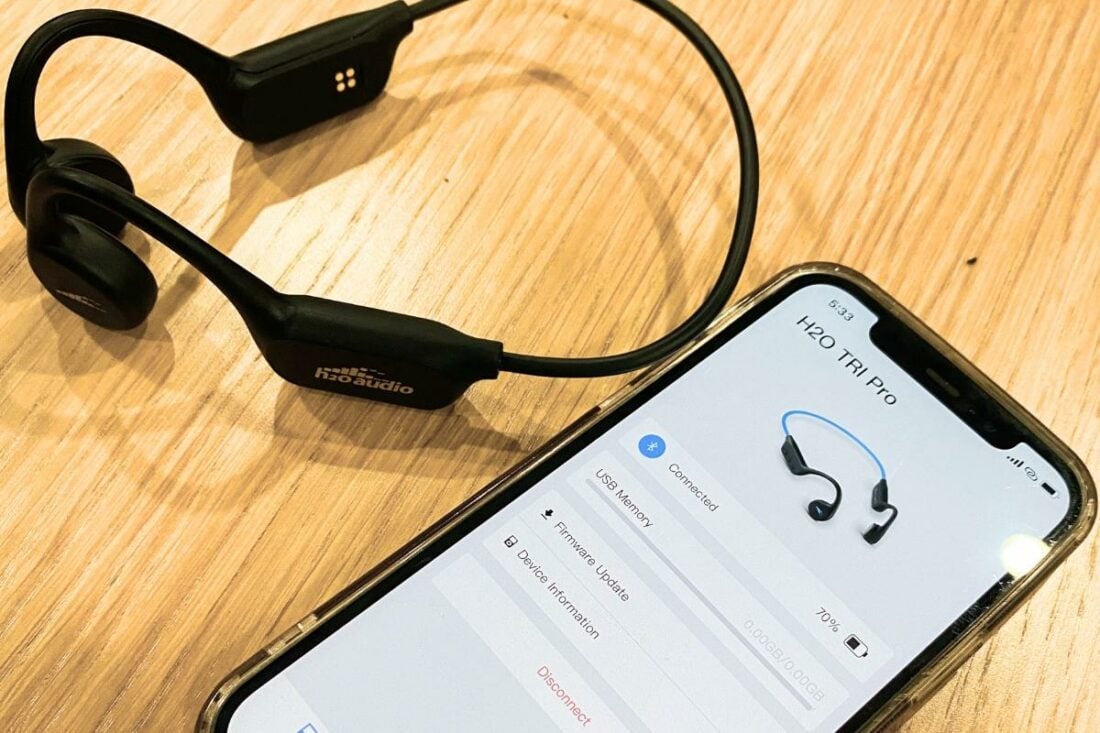
But, the accompanying H2O app is where the headphones truly shine. This offers three distinct operational modes: MP3, Bluetooth, and Load.
MP3 Mode helps you manage the music you’ve stored in your headphones. Bluetooth Mode connects the headphones to your phone so you can listen to streaming services like Spotify, YouTube, and Apple Music. Finally, Load Mode acts as an audio recorder that stores the recorded sound on your headphones.
Since it’s very unique, it was the Load Mode that piqued my curiosity the most.
This mode lets you save music and podcasts from streaming services right onto the headphones for when you don’t have internet access or don’t want to bring your phone with you.
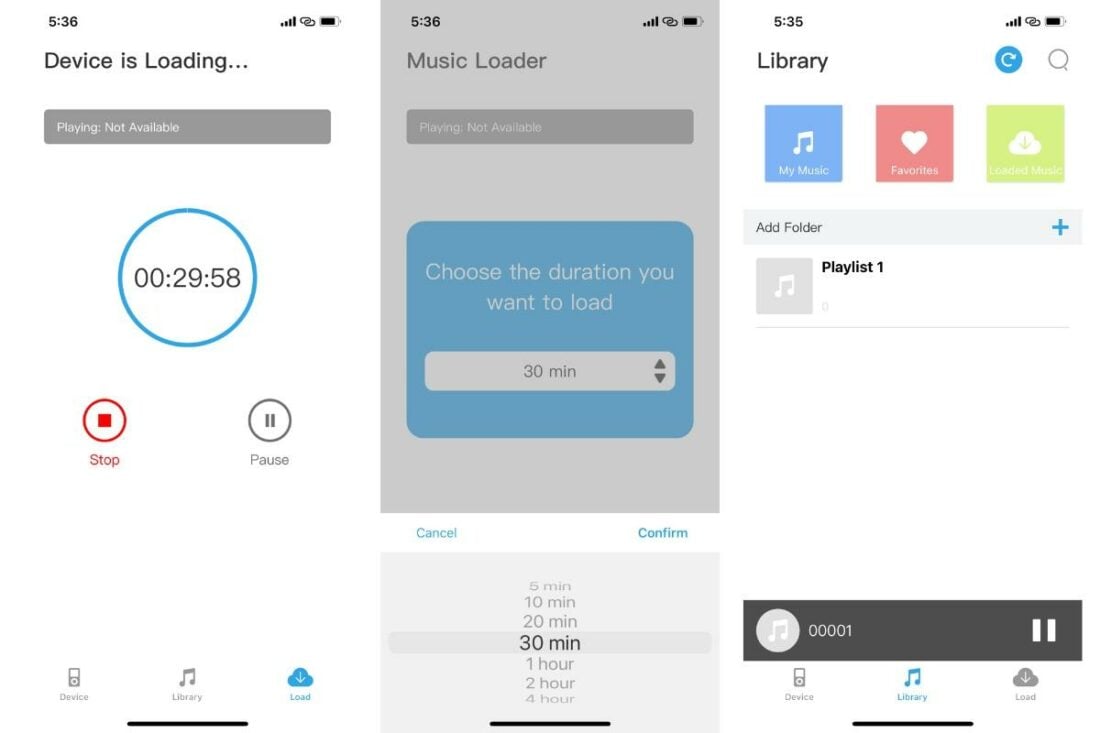
It’s a cool idea, but I found it a bit too troublesome. First, you have to listen to the tracks all the way through at the volume you want as it records. Next, you can’t split tracks automatically or edit them after they’re saved, so you’ll have to manually start and stop recordings to separate them.
I don’t think I’ll be using the Load Mode much (if not at all).
If I don’t want to use my phone to stream music, using MP3 Mode is quicker. I simply have to connect the headphones to my PC or Mac via the included USB connection and drag and drop files, and it’s good to go.
Who Should Buy This
Because of the MP3 player and Bluetooth mode, the H2O Audio TRI PRO are great for those who don’t want to buy separate headphones for their above and underwater listening.
Yet, they’re not so great on land. So, they’re ideal for those who mainly need headphones for water use and can look past the aboveground setbacks for their aquatic performance.
I would definitely recommend these headphones to amateur or maybe even professional swimmers who want the simplicity of being able to listen to music during their sessions without much fuss.
Final Thoughts
The H2O Audio TRI PRO are a bit of a mixed experience.
They stand out for their waterproof abilities, with an IPX8 rating that lets them work perfectly in water up to 12 feet deep. This, along with their comfortable fit and secure design, makes them great for swimming and other water sports.
Their built-in MP3 player, which can store a large number of songs, is also a huge plus for those who’d rather not bring their phone near water.
On the downside, these headphones don’t perform as well out of water.
Their sound quality on land doesn’t impress, lacking in bass and delivering only average midrange and treble sounds. Also, the bone conduction speakers can be annoying due to the vibrations they cause, especially with bass-heavy music. And, the battery life indicators and the lack of advanced battery-saving options could be inconvenient.
In short, the TRI PRO headphones excel in water, offering great waterproofing and a handy MP3 player for swimmers and water enthusiasts. However, they fall short on land, with sound quality and user experience that could be better.
Where to Buy
What’s in the Box?
- H2O Audio TRI PRO Headphones
- Charging cable
- Ear plugs
- Manual Instructions
Technical Specifications
- Form: Bone conduction headphones
- Driver: Bone Conduction
- Waterproof IP Rating: IPX8
- Weight (g): 32 grams
- Bluetooth Version: 4.0
- Battery Life (hrs): ~6 hours
- Mic: N
